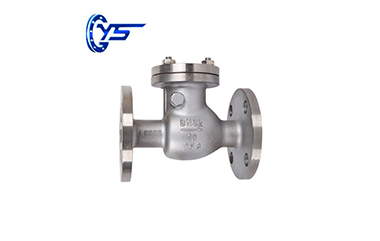What Is The Function Of a Check Valve?
The primary purpose of a system abort return valve is to prevent backflow, which may damage equipment or contaminate upstream media.
Common check valve problems include noise, water hammer, vibration, countercurrent, viscosity, leakage, and component wear/damage. To prevent problems, it is important to correctly specify check valves for the application and media. Two of the most common problems caused by incorrect specifications are countercurrent and water hammer. For both problems, use quick-closing check valves. Reverse flow may occur if the check valve is not closed quickly enough; A water hammer may occur if a pressure surge causes a shock wave in the medium.
Water hammer can be prevented if the check valve works quickly. This prevents pressure fluctuations that create shock waves throughout the medium. These shockwaves can damage equipment, pipe supports, or even rupture pipes due to vibration.
When the check valve does not operate, it will allow backflow. There are three possible reasons for this: sticking, leaking, or closing slowly. If there is no filter in the line, dust and debris may remain between the disc and the body, leaving the disc open. Disc or seat may be damaged or torn due to wear or corrosive media on the material, thus unable to seal properly and allowing backflow. If the valve closes too slowly, minimal backflow may be allowed before proper sealing can be performed. Make sure the gravity is helpful to the design and/or the spring is fast enough to close the valve quickly.
Check valves need to be installed according to their inlet and outlet, which is usually shown as an arrow on the valve housing. Because they allow flow in only one direction, they will not work properly if they are installed backward. Horizontal or vertical, depending on your valve design type. If you have a spring, you can go in any direction. Without a spring, gravity can interfere with the operation of the check valve, so make sure you know that the internal assembly will ensure that you install it correctly in a horizontal or vertical manner.

The main advantage of check valves is their simplicity of design. In general, check valves are also smaller and easier to install than other types of valves, making maintenance easier and more efficient. Check valves can be designed with special non-collision characteristics to reduce noise and seal wear.
Check valves point in the direction of permissible flow. Vertical lines indicate that no backflow is allowed.
When selecting a check valve for your application, consider the following criteria:
Material compatibility with media
The wire diameter of the connection point
The maximum pressure and cracking pressure requirements
The installation direction is horizontal or vertical
The envelope size
Accessibility requirements for inspection and maintenance
Temperature (external and medium)
We are Check valves manufacturers. Please feel free to contact us.
Copyright © Hebei Yaosheng IM & EX Trading Co.,Ltd. All Rights Reserved |Sitemap | Technical Support: 
